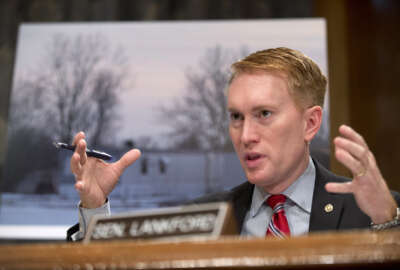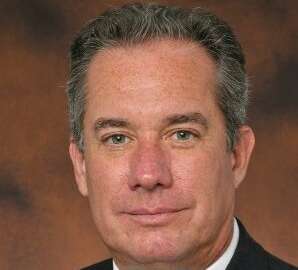
SES modernization plan should include risks, on and off ramps, roles for millennials
The senior executive service faces an unprecedented time where criticism is rampant, the environment is fast-paced and the retirement bubble teeters on popping.
Would you nominate Edward Snowden as Employee of the Month?
The answer might be yes if you’re part of the future federal workforce, and that’s something current senior executive service members need to accept if they want to successfully lead a modern government.
“In 10 years, you will be faced with creating within a generation that admires Edward Snowden and believes him to be a national hero, and to get that cohort to be meaningful contributors — disruptive contributors — to a new style of federal bureaucracy,” said Michael Hayden, former director of the CIA and NSA. “I’m trying to suggest, in an airmen’s fight you don’t want to get yourself in a tail chase. In other words getting better and even better technique to improve a cohort that has generational values of the greatest generation, the Boomers, the X-ers, the Y-ers. The word there is future. You’re going to have to do this with millennials, who have a different — not better or worse — but a different approach to just about everything. And how then do we create that cohort going forward.”
Hayden was part of a panel discussing goals and sustainability for the SES future, during a book launch event March 17, at the Brookings Institution in Washington, D.C.
The book, called “Building a 21st Century SES,” was published by the National Academy of Public Administration.
“If there’s a theme to the book, it’s this notion that now more than ever before, we need an executive corps that leads from a whole of government perspective,” said Ron Sanders, a NAPA fellow, vice president and fellow at Booz Allen Hamilton, and former associate director of National Intelligence.
The book is a series of stories and case studies, written by former SES leaders and academics. It includes recommendations like establishing a permanent way to engage the SES corps, making mobility and “character,” SES prerequisites, providing “peer review” for greater accountability, and a few others related to executive core qualities and SES compensation.
“I don’t think it’s hyperbole to suggest that the senior executive service is at risk,” Sanders said.
For one thing, the demographics are daunting. More than 65 percent of SES members are eligible to retire, and the prospect of a government reorganization could be the needle that pops the “retirement bubble.”
While that might be seen as opportunity for upward movement in the GS ranks, the logical successors aren’t interested in filling those roles, Sanders said.
“We’ve had a frustrating and persistent lack of diversity in the SES corps, not just race and nation of origin and gender, but also cognitive diversity,” Sanders said. “There’s not a lot of movement in the executive corps, nor is there a lot of new executives coming in from the outside.”
Michele Flournoy, the former undersecretary of defense for policy, said part of the problem is that when a civil servant leaves government service to do something like start a family or take care of a sick relative, “it’s like they’ve fallen off the face of the earth.”
Adding to Hayden’s comments on millennials, Flournoy said three kids and their friends “have a natural desire to do some form of service. They’re very service oriented as a group, and they don’t want to do one thing for 30 years. And they perceive too often the government as a place where you go in and do one thing.”
Changing that perception and building easy on and off ramps are important “to really fully leverage the talent of a new and very different generation,” Flournoy said.
Changing direction
Issues around SES mobility and demographics need to be solved, but another concern is what recent White House orders could do to the leadership corps.
“The prospect of a historic government reorganization may be the needle that finally pricks that retirement bubble that’s been waiting to burst for several years,” Sanders said.
Political leaders questioning civil servant professionalism are also hurting the senior executive service, Flournoy said, which is why it’s important that SES leaders are “leading the investment in the workforce, the protection of the workforce.”
“It’s not just about improving morale, but also the most powerful way that you can recruit talent, retain talent and improve performance,” Flournoy said.
Carolyn Colvin former acting commissioner of the Social Security Administration, added her support for SES to encourage taking risks in their offices, a drumbeat that’s been playing for years.
“I believe agency leaders have to create an environment where people are urged and rewarded to take risks, because only when you take risks do you create innovation and creativity,” Colvin said. “Particularly as we look at the all around policies and systems, we usually develop a policy or process to deal with one particular problem and then it becomes embedded and everyone begins to follow it. I really look for people who are creative, innovative, think out of the box, who if you say ‘this is the way we’ve always done it,’ their first response will be ‘then we shouldn’t be doing it that way any longer.'”
Clay Johnson, former deputy director of management at the Office of Management and Budget [under the Bush-Cheney administration], said the qualities he thinks SES members need for the 21st century are to be “doers” and not “be-ers.”
Be active, not passive, he said, and do things with your people, and not to your people.
Johnson said it’s also important to talk with a candidate about why they made various professional career decisions, offering as example something like a college major or graduate program, or why someone chose to take one job or leave another, and what they might be looking for in terms of change, growth and mobility.
A strong SES corps and effective government go hand in hand, Johnson said, and that requires governmentwide commitment.
“If the commitment to the government is really working, accomplishing desired outcomes, lots of transparency, there will be a viable SES corps,” Johnson said. “In the absence of that, there’s a lot of pushing. Pushing the SES corps to be effective. If the goal up here is real, it will be pulled forward.”
Copyright © 2024 Federal News Network. All rights reserved. This website is not intended for users located within the European Economic Area.





